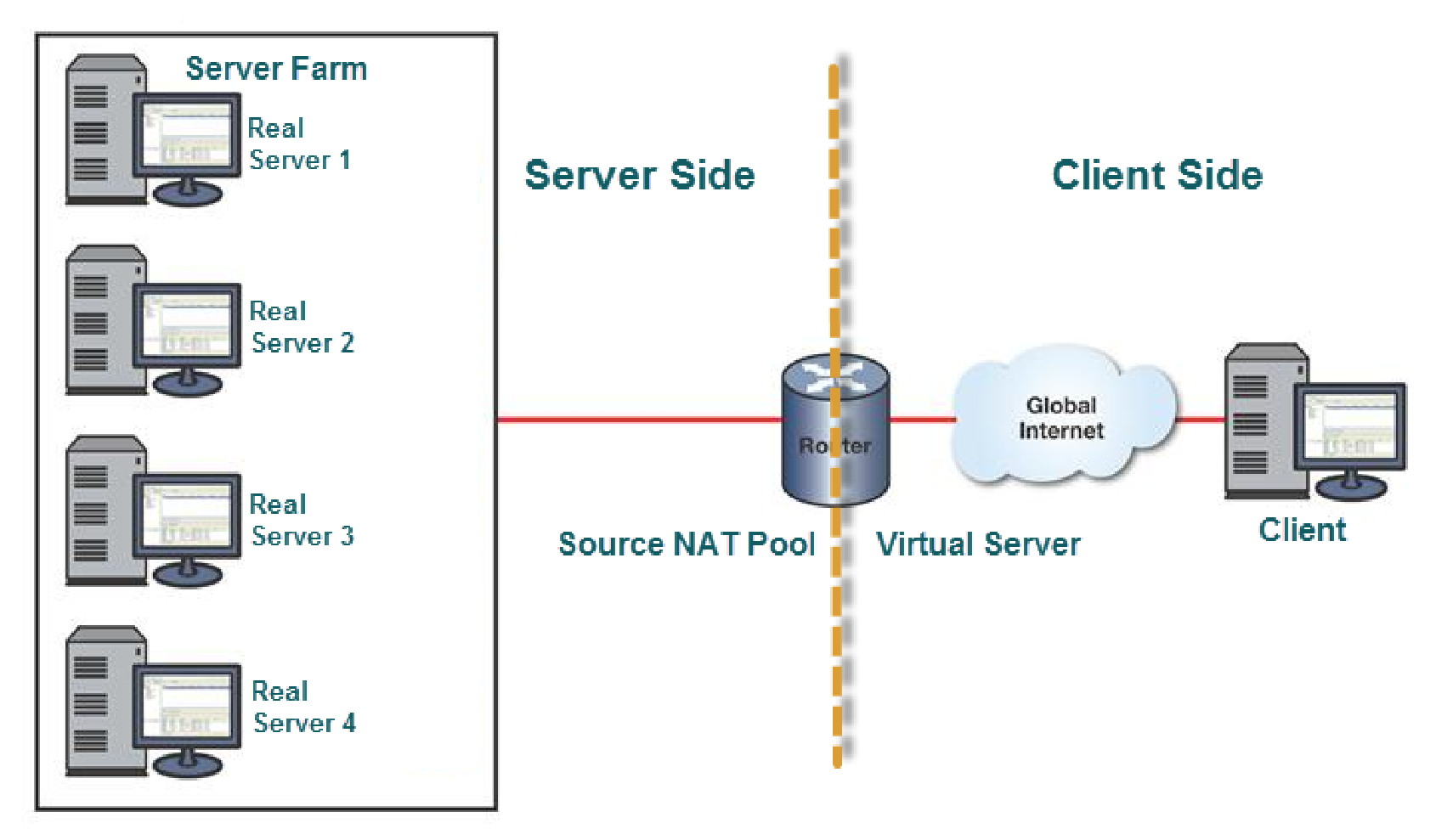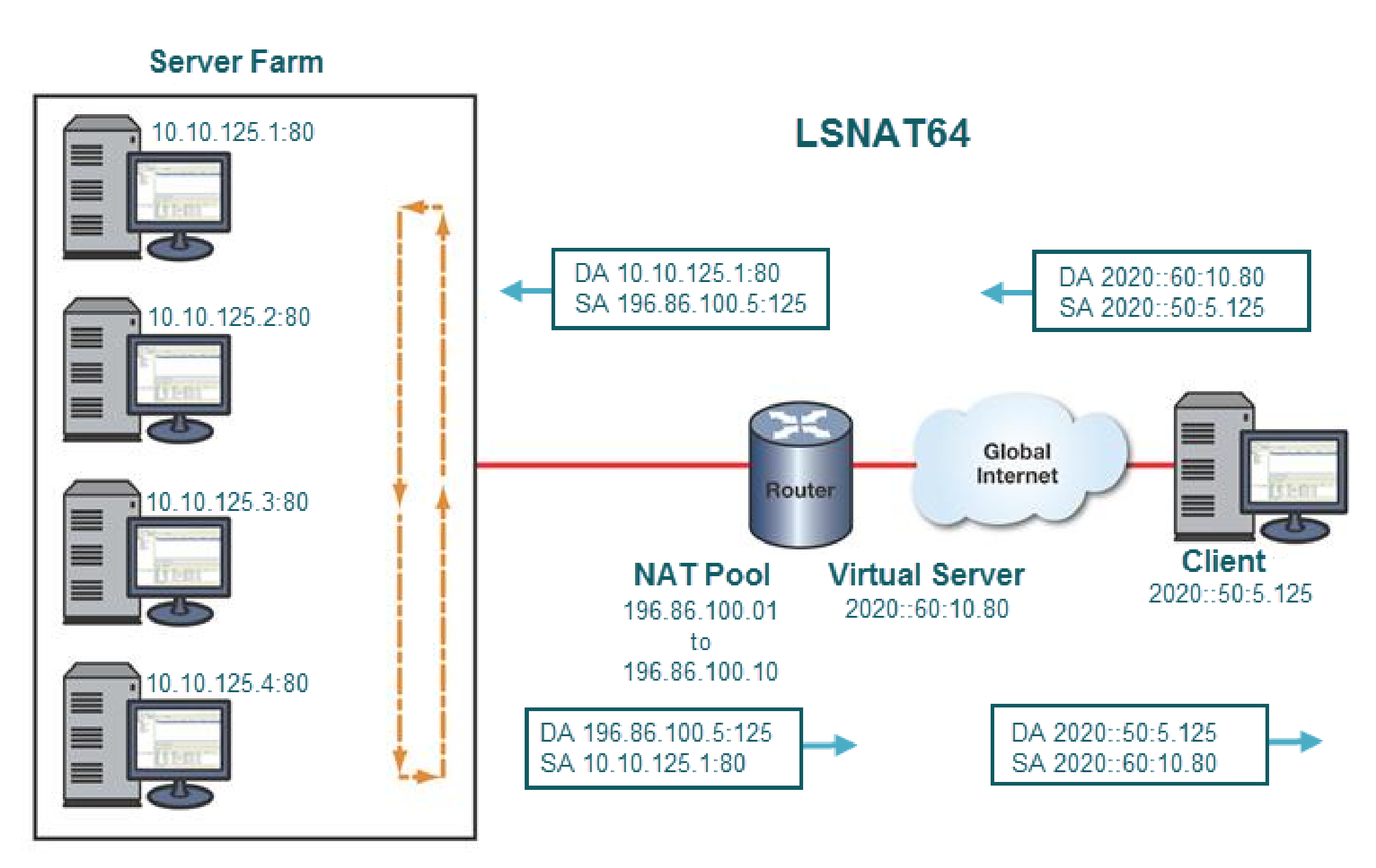The S-Series LSNAT implementation supports IPv4 and IPv6 addressing for both the client and real server sides of the LSNAT configuration. IPv4 and IPv6 combined configurations are expressed as LSNATxy where x refers to the client side IP address type and y refers to the real server side IP address type as a 4 for IPv4 or a 6 for IPv6. For example, LSNAT46 refers to an LSNAT configuration where the client and virtual server use IPv4 addressing and the real server, server farm, and source NAT pool use IPv6 addressing.
LSNAT IP address combination support allows any client access to both server farm IP address types based upon the virtual server the client is configured to. LSNAT combination IP address configuration rules are:
See LSNAT Configuration Example for a configuration example consisting of two clients, four virtual servers, and two server farms that provides for all LSNAT IP address combinations.
LSNAT Configuration Client and Server Side Components displays the client and server sides of an LSNAT configuration.

The LSNAT configuration client side consists of the:
The LSNAT configuration server side consists of the:
LSNAT components belonging to a side must be in IP address type (IPv4 or IPv6) agreement. The client and server sides do not have to be in IP address type agreement with each other. This lack of agreement between LSNAT configuration sides allows for LSNAT64 and LSNAT46 configurations.
LSNAT64 Packet Flow Example an LSNAT64 configuration packet flow displaying destination and source addresses by IP address type. The client side is configured for IPv6 and the server side is configured for IPv4.

The packet egressing the client is source addressed to the client IPv6 address 2020::60:10.80 and destination addressed to the router configured IPv6 virtual server address 20.20::60:10.80 the client is assigned to. This LSNAT64 virtual server is configured with:
When the packet ingresses the router, the IPv6 virtual IP address is natted to an IPv4 address from the IPV4 source NAT pool configured for the virtual server (196.86.100.5). The packet egresses the router with source NAT pool address and a destination address of one of the IPv4 real servers of the IPv4 server farm (10.10.125.1:80) assigned to the virtual server.
The packet returning from the real server has an IPv4 source address of the real server and an IPv4 destination address from the IPv4 source NAT pool. When the packet ingresses the router, the IPv4 source NAT pool address is natted to the LSNAT64 virtual server address the source NAT pool is assigned to. The packet egresses the router with an IPv6 source address of the IPv6 virtual server and an IPv6 destination address of the IPv6 client.
In the case of an LSNAT46 configuration, the IP address types for this discussion are reversed. A virtual server in an LSNAT46 configuration is configured with:

 Print
this page
Print
this page Email this topic
Email this topic Feedback
Feedback